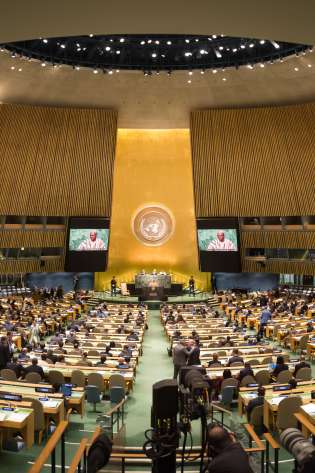By
Niamh Walsh
on
30th November 2022
Cop27 has initiated the challenging task of reducing the worldwide impact of the fashion industry. This includes confronting the environmental crisis that the industry has played a role in exacerbating during the preceding decades.
In Egypt, a few weeks ago, the annual Cop27 summit (United Nations Climate Change Conference) brought together stakeholders from around the world. The spotlight soon shifted to the fashion industry, which is often ranked as the second-most polluting sector after oil and gas. Responsible for as much as 10% of the world's carbon dioxide emissions—surpassing even the combined emissions from international flights and shipping—it's no wonder that conversations at the summit revolved around the environmental consequences of the fashion industry.
Source: Bloomberg
According to a report by Bloomberg, this year's COP27 highlighted the critical decisions that fashion businesses must make to reduce their carbon footprint and create a positive environmental impact. Examples were presented, including the use of low carbon fibres to minimise environmental harm and the repurposing of textile waste to produce new clothing items. Presently, only a small fraction of manufactured clothing is recycled, with 87% of the total fibre input used for clothing being either incinerated or sent to landfills.
Source: Bloomberg
The fashion industry, responsible for approximately 10% of global greenhouse gas emissions, faces the challenge of halving these emissions by 2030. To achieve this, the industry must prioritise decarbonisation initiatives and process enhancements, focusing on transparency and traceability to foster genuine sustainable change rather than mere "greenwashing" their brand.
Discussions also emphasised the shared responsibility of consumers, stakeholders, and corporations to accelerate sustainable practices. Large companies need to commit to net-zero objectives, consumers are encouraged to practice responsible consumption, and investors are urged to provide increased financing to entities that align with environmental, social, and governance (ESG) principles. Initiatives like "The Sustainability Pledge" were highlighted as practical tools for investors, governments, and industry advocates. This pledge aims to enhance traceability and transparency within value chains, supported by around 100 pledges featuring company-specific key performance indicators involving over 350 partners.
Key takeaways from discussions on achieving net-zero targets in the fashion industry include:
Substantial investments in scalable solutions for monitoring and reducing industry-wide greenhouse gas emissions.
Collaborative efforts within and between industries to comprehend ecosystem challenges and opportunities.
Embracing transparency and traceability strategies to measure, identify, and mitigate social and environmental impacts throughout value chains.
Adoption of international standards to effectively communicate the environmental footprint of products and minimise fragmentation effects.
Implementation of policy actions to promote responsible business conduct in global value chains, including pricing in externalities and creating a level playing field for industry players.
Alignment of objectives among stakeholders to prevent the exploitation of workers, land, and natural resources.
The UNECE (United Nations Economic Commission for Europe) has recently established a team of experts focused on ESG traceability. This initiative contributes to informed decisions regarding sustainable production and consumption, enabling companies to rethink business models and promote circular design, recyclability, reuse, and repairability.
Source: UNECE Media












